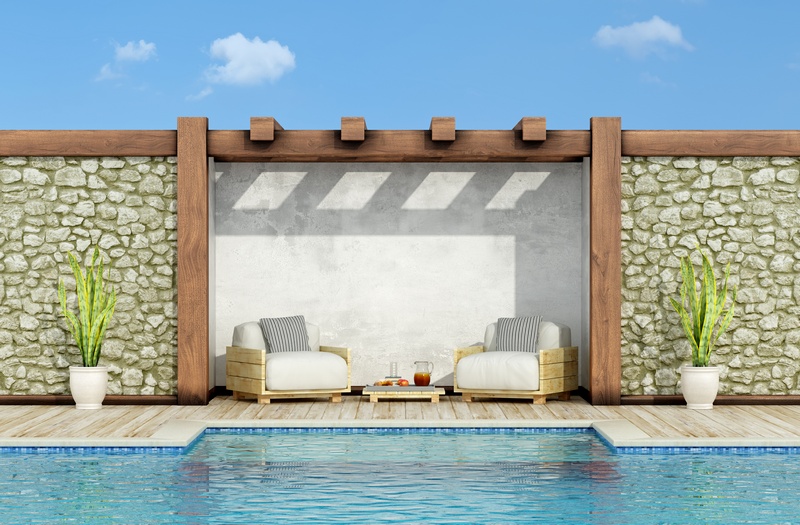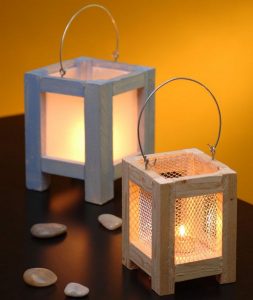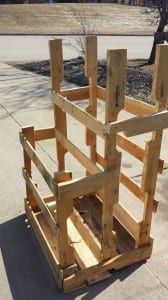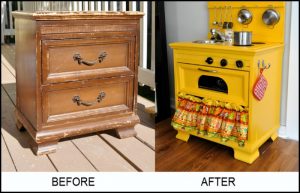Last Updated on April 11, 2024 by teamobn
Swimming pools, like houses, grow tired over time. While most of us try to keep our homes well-maintained, the pool often gets overlooked. After all, you use the house constantly but the pool may only get used a dozen or so times a year.
The proximity means that you’ll be constantly reminded when things in your home are due for replacement, or a refurb. But it’s easy to put the swimming pool in the ‘too hard basket until it becomes a ‘must do’ project.

If you’re at or approaching that stage now, here are five steps you can take to ensure the project goes well:
5 Steps to Refurbishing Your Swimming Pool
Step One: Timing… tikka, tikka tikka, tikka – timing!
This is a project where you need warm, dry weather. Winter is probably your enemy since even overnight dew will not dry out completely until mid-morning.
If your swimming pool is outdoors, as most are, you’ll need to time your swimming pool painting project to suit the weather. Ideally, you’ll need a minimum of one week without rain and at least a few hours of daily sun to ensure your paint job will be a success.
Paint on a day between 20 and 35 degrees Celsius (70F and 100F). Colder and the paint may take too long to dry. Hotter and the paint will dry on the brush before you even get it on the swimming pool! Avoid very humid days and days with high winds or you’ll find debris attaching itself to fresh paint!
Before and after painting, your swimming pool needs to be very dry (unless you’ve chosen acrylic pool paint or epoxy primer), so you’ll need to be prepared in case rain suddenly appears in the form of a storm (or just another bad forecast)! Have a leaf blower/vac, a bucket and rags and clean shoes on hand to clean out any debris or rainwater sitting in the pool. Do this as soon as possible.
If your swimming pool is empty and you get hit by a storm or excessive rain, wait a few days to start painting, as a higher water table could possibly ‘float’ the swimming pool, dislodging your pool from the ground. To avoid this, open up the hydrostatic relief caps at the bottom of your swimming pool.
Step Two: Prep your pool
You’ll need to prep your swimming pool before painting. The first step is to drain the pool and open the hydrostatic valves. Ideally, you want to drain the water as far away from your pool as possible – preferably downhill. From there, take the time to scrape away any loose paint and repair or fill any cracks or hollow spots with a suitable filler.
Next, scrub your swimming pool with Tri-Sodium Phosphate (TSP) to remove any excess oils on the pool surface. Rinse thoroughly and then acid washes the pool to roughen it up a bit. Rinse thoroughly again. Pump out any remaining water and then let your pool dry completely over at least three to five days. Tape up any lights, tiles and fittings with painter’s tape.
Finally, read and follow the manufacturer’s directions on your Surface Prep Kit (such as TSP or acid etching products). The directions are there to help you achieve the best possible bonding surface for your paint coats.
Step Three: Painting the Pool
OK – so now you’ve prepared and dried your swimming pool, you’re ready to pick up that brush and start painting! Ideally, start with a primer. The extra cost and effort will pay dividends, especially if you’re pool has never been painted.
A good quality primer will significantly improve the bond and extend the lifetime of the more expensive finishing coat. There are different types of primers so consult a specialist paint shop for a suitable recommendation.
Before painting, mix your paint well. Use either a flat piece of timber or a power drill with a mixing paddle. Ensure that it is mixed thoroughly. Note that epoxy paints have an additive (hardener) that begins to react as soon as you mix it into the paint – so make sure you finish each batch within a few hours of mixing.
Stating the obvious, you don’t want to paint yourself into a corner, so start your painting in the deep end. You’ll find that a telescoping paint pole will be a huge benefit as it will enable you to reach all the way up the walls without having to bend or stretch.

A low-nap roller (10mm (3/8″) nap or less) will give the smoothest finish. Use a 20-litre bucket (5 gallons) with a grid rather than a flat paint pan for this task. Alternatively, a great time-saver is a good-quality spray unit like this one from Wagner.
Most domestic spray units will ‘choke up’ on unthinned paints but this unit and others of similar quality can handle unthinned latex-based paints without difficulty. If you have never used a spray gun, consider a practice run first by taping newspaper to your fence as a test medium.
As an aside, I put off buying a spray unit for decades because the domestic models had a bad reputation when it came to spraying plastic paints as well as anything where you could not keep the gun horizontal. I succumbed to temptation about a year ago after reading a review of that same Wagner unit mentioned above.
It paid for itself times over on the first use -a new deck that needed three coats of water-based oil. Whether using a brush, roller or spray unit, overlap your strokes just slightly and use even pressure to achieve a professional finish. Use a small cut-in brush to handle the 90-degree corners around steps and swim-outs.
Before, during and after painting, blow off or (preferably) vacuum the pool surrounds or deck to prevent debris from blowing into your pool. It might also be time for Rover and Lassie to spend a week in a holiday retreat as they’ll want to know what you’re doing in that empty pool!
If you need to put down multiple coats on your swimming pool – and you should aim for at least two, follow the manufacturer’s directions and never rush a second coat of paint if the first isn’t ready. Even in perfect weather, it can take up to eight hours for the paint to dry. If the previous coat isn’t dry, you run a big risk of ending up with an ‘orange peel’ finish.
Monitor the amount of paint you’re using – you don’t want to run short, nor do you want to have lots left over! If you’ve decided to buy and use that spray gun, you’ll be astounded by how quickly you go through the paint.
Step three point five!
OK, so I’m fudging a bit here. But since you’ve put all that effort into preparing and painting your pool, why not add some fun effects while you are at it? Try a stencil or two or even a full mural. They will make your pool a masterpiece and you’ll become the ‘go to guy’ in your neighbourhood 🙂

A stencil can be cut from a photo or illustration and you shouldn’t hesitate to use multiple colours to create a great effect.
Step Four: After painting the pool
That’s it! Your paint job is finished! The bad news, for you, the kids and the dogs, is that you can’t jump in yet. Pool paint can take up to five days to dry, so it pays to be patient. Keep an eye on the weather and if it turns bad, get down there with your blower/vac and clean shoes as soon as possible to keep moisture and debris away from your masterpiece.
Step Five: Filling the painted pool
Fun time! The paint is finally and completely dry. Start filling that sucker and don’t stop until it’s full. Now balance the pH, alkalinity and hardness levels, add chlorine or salt, start the filter system and dive right in!
Step Six: Regular Maintenance for Lasting Results
Once your swimming pool is filled and all chemical levels are balanced, the journey to a beautifully refurbished pool doesn’t end. Implementing a routine maintenance schedule is crucial to preserve the pristine condition of your pool. Regularly check and adjust the chemical balance to ensure the water remains clear and safe for swimming.
Skim the surface daily to remove debris and clean the pool filter regularly to prevent clogs that can affect the water quality and circulation. Periodic brushing of the pool walls and floor will keep algae at bay and maintain the integrity of your new paint job. By dedicating time each week to these maintenance tasks, you’re not only extending the life of your refurbished pool but also ensuring it remains a welcoming retreat for family and friends.
What’s your experience with refinishing your pool? Did you use a roller or a spray unit? Share your comments and questions by using the comments section below!
Conclusion
Refinishing your swimming pool can dramatically transform its look and extend its life, offering you more enjoyable moments in the sun. By following the outlined steps, from preparation to the final touches, you’ve ensured a smoother, more efficient refurbishing process that leads to a stunning outcome. As you fill the revitalized pool and adjust the water’s chemistry, you’re not just wrapping up a project but setting the stage for countless days of fun and relaxation in your personal oasis.








